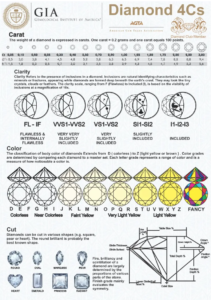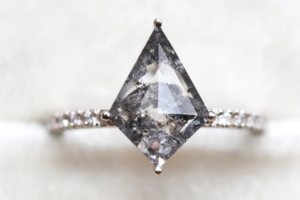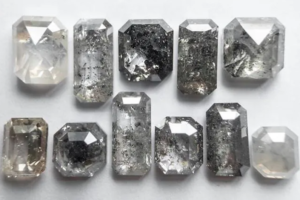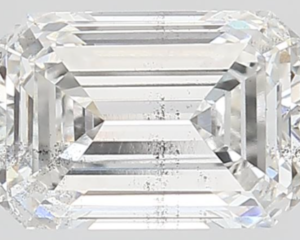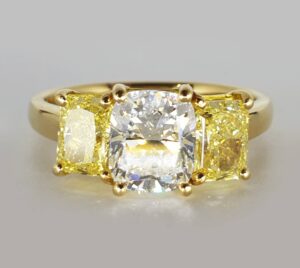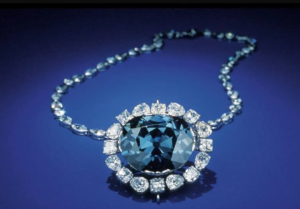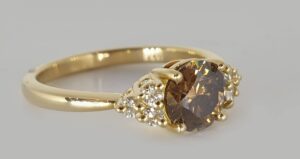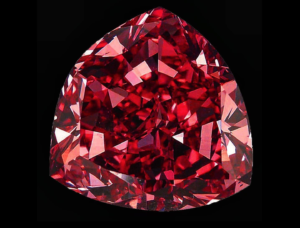Diamonds
Lab Diamonds VS Earth Diamonds
What is a Lab Diamond?
It’s important to note that both lab-grown and earth-grown diamonds are real diamonds, they are visually and chemically the same. The only differences between the two are how they were created, and lab diamonds have their own serial number laser printed on. This number is not visible to the naked eye.
Lab-grown diamonds are an excellent alternative to earth-grown diamonds for the following reasons:
Ethical Sourcing: Eliminates concerns related to conflict or “blood” diamonds.
Environmental Sustainability: Low environmental footprint, with controlled production using fewer resources.
Cost-Effective: More affordable than earth grown diamonds, offering higher quality at a lower cost.
Size and Carat Weight:
Lab-grown diamonds can be produced in larger sizes more consistently than earth-grown diamonds. This is because the growth of lab diamonds is not constrained by the limitations of natural formations.
Transparency: Clear traceability, providing consumers with information about origin and production. (If stolen, each Lab Diamond has its own serial number, making them traceable)
The Process
The process begins with a small diamond seed crystal, which is often a tiny piece of an existing diamond.
This seed crystal will serve as the foundation for the growth of the new diamond. The two methods used to grow a lab diamond are High-Pressure, High-Temperature (HPHT) Method or Chemical Vapour Deposition (CVD):
HPHT Method: In this method, the seed crystal is placed in a press that simulates the high-pressure and high-temperature conditions found in the Earth’s mantle.
Under intense pressure and heat, carbon atoms in the surrounding material start attaching to the seed crystal and crystallising, forming a larger diamond.
CVD Method: In this method, a small amount of carbon-rich gas (like methane) is introduced into a chamber.
The gas is then ionised using microwaves, creating a plasma. The carbon atoms from the plasma bond together, layer by layer, on the seed crystal, gradually forming a diamond.
Diamond Growth:
The timeframe for growing a 1-carat diamond depends on whether it’s natural or lab-grown:
Natural Diamonds:
These take a significantly longer time due to the intense pressure and heat required for natural formation. Estimates range from 1 to 3.3 billion years!
Lab-Grown Diamonds:
generally take 3 weeks to 1 month per carat to grow.
Other factors can influence the time, such as:
Desired size and color: Larger and rarer colors take longer.
Production technology: Newer equipment might be faster.
Number of diamonds grown simultaneously: Growing multiple at once can be efficient.
The controlled environment allows for the manipulation of conditions, resulting in the formation of high-quality diamonds with fewer impurities.
Cooling and Diamond Extraction:
Once the diamond reaches the desired size, the high pressure and high temperature are gradually reduced.
The diamond is then carefully extracted from the growth chamber.
Cutting and Polishing:
The rough diamond obtained from the growth process is cut and polished using traditional diamond cutting techniques.
This step enhances the diamond’s brilliance and reveals its final shape.
Grading and Certification:
The lab-grown diamond is then subjected to the same rigorous grading standards as mined diamonds.
Organisations like the Gemological Institute of America (GIA) provide certifications based on the diamond’s cut, color, clarity, and carat weight.
Benefits of Lab-Grown Diamonds:
Ethical and Environmental Considerations: Lab-grown diamonds are often considered more ethical and environmentally friendly because they are produced in controlled environments, reducing the environmental impact associated with traditional diamond mining.
Cost: Lab-grown diamonds are almost always more cost-effective compared to earth diamonds.
A deeper Dive into the different Machines
Though both CVD and HPHT diamonds boast the same brilliance and durability as their natural counterparts, subtle variations exist:
Chemical Vapour Deposition (CVD): Typically takes around a month for a 1-carat diamond.
High-Pressure High-Temperature (HPHT): Usually takes 2-3 weeks for a 1-carat diamond.
The difference in the results between the two techniques are small, but important.
Color:
HPHT: Often shines with exceptional color grades (D-F, nearly colorless), making it ideal for those seeking pristine white diamonds.
CVD: While still achieving high color grades, it might have a slight tendency towards faint brownish or grayish hues.
Clarity:
CVD: Frequently boasts exceptional clarity grades (FL, VVS1) due to fewer internal inclusions, resulting in flawless beauty.
HPHT: May contain more minor inclusions due to the intense pressure involved, though these are often microscopic and invisible to the naked eye.
Growth Pattern:
HPHT: Forms diamonds resembling a cub-octahedron, a unique 14-sided shape.
CVD: Typically grows cube-like diamonds, offering a distinct geometric charm.
Cost:
CVD: Currently, it might be slightly more expensive for comparable quality due to its newer technology and potential for exceptional clarity.
HPHT: Generally more cost-effective for smaller diamonds and certain color ranges, making it a budget-conscious choice.
Environmental Impact:
CVD: Considered more environmentally friendly due to lower energy consumption and a smaller carbon footprint compared to HPHT’s demanding pressure and temperature requirements.
Choosing Your Diamond:
The perfect lab-grown diamond awaits! When making your choice, consider:
Color preference: If a diamond white as snow is your dream, HPHT could be a touch better.
Clarity preference: For an internally flawless gem, CVD might be your champion.
Budget: HPHT shines for smaller diamonds or specific color grades, while CVD offers exceptional clarity at a premium.
Environmental consciousness: For a greener choice, CVD stands out.
The 4 Cs in diamond grading!
The 4 Cs are a standardised system used for grading diamonds, providing a comprehensive evaluation of a diamond’s quality. The 4 Cs are Carat, Color, Cut, and Clarity.
Carat Weight:
Definition: Carat is the unit of measurement for a diamond’s weight. One carat is equivalent to 0.2 grams.
Significance: Carat weight influences the overall size and perceived value of a diamond. Larger diamonds are generally rarer and more valuable. However, carat weight alone does not determine a diamond’s beauty or quality.
Color:
Definition: Diamond color refers to the presence or absence of color in a diamond. The Gemological Institute of America (GIA) grades color on a scale from D (colorless) to Z (light yellow or brown).
Significance: The less color a diamond exhibits, the more valuable it is considered. Color differences can be subtle and are often discerned under controlled lighting conditions. Color grading is crucial for determining a diamond’s overall aesthetic appeal.
Cut:
Definition: The cut of a diamond refers to its proportions, symmetry, and finish. It includes factors such as the diamond’s shape, the quality of its facets, and how well it reflects light.
Significance: Cut significantly impacts a diamond’s brilliance, fire, and scintillation (sparkle). A well-cut diamond maximises light performance, making it more visually appealing. Cut is graded from Excellent to Poor, with each grade affecting the diamond’s overall beauty.
Clarity:
Definition: Clarity assesses the presence of internal and external flaws, known as inclusions and blemishes, respectively. The GIA grades clarity on a scale from Flawless (no inclusions or blemishes visible under 10x magnification) to Included (inclusions and/or blemishes visible to the naked eye).
Significance: Diamonds with fewer or no inclusions are rarer and considered more valuable. However, the vast majority of inclusions are microscopic and do not impact a diamond’s beauty or durability. The key is finding a balance between clarity and budget.
Understanding the 4 Cs and their interplay is essential when selecting a diamond, as these factors collectively influence its appearance, value, and overall quality. The goal is often to find the right balance among the 4 Cs based on personal preferences and budget constraints.
Clarity in Diamonds
Clarity is one of the 4 Cs.
You can see that in the pictures, there are different types of diamonds with different types of inclusions.
Before reading the rest, please comment which pictures you think are showing I3 diamonds and which ones are salt and pepper diamonds.
When I discovered diamonds and their grading system, and then discovered salt and pepper diamonds, My first thought was;
“What makes an I3 diamond any different from a salt and pepper diamond, and why are salt and pepper diamonds so much more marketable?”
The short answer is, a salt and pepper diamond is picked out to have artistically placed inclusions. It doesn’t just look like a muddy diamond.
Here are two examples of salt and pepper diamonds
Please read on for the long answer…
Starting with I3 Diamonds (Included 3):
Clarity: I3 is the lowest clarity grade on the Gemological Institute of America (GIA) scale. Diamonds in this category have significant and easily visible inclusions and blemishes. Inclusions may be large, numerous, and may affect transparency and brilliance.
Appearance: I3 diamonds often have noticeable flaws that can impact the overall beauty and sparkle of the stone. The inclusions may be visible to the naked eye and may affect the structural integrity of the diamond.
Salt and Pepper Diamonds:
Clarity: The term “salt and pepper” is not an official grading term but is commonly used in the industry to describe diamonds with a mix of black and white inclusions. These inclusions are typically salt-and-pepper-like in appearance, scattered throughout the diamond.
Appearance: Salt and pepper diamonds are celebrated for their unique and distinctive appearance. The inclusions give the diamond a more natural and rustic look, and the scattered dark inclusions can resemble salt and pepper specks. Many people appreciate the individuality and character that salt and pepper diamonds bring to jewellery.
In summary, while both I3 diamonds and salt and pepper diamonds have visible inclusions, I3 diamonds are at the lower end of the clarity scale, often with significant flaws that may affect the diamond’s overall appearance and durability. Salt and pepper diamonds, on the other hand, refer to diamonds with a charming mix of black and white inclusions, prized for their distinctive and unconventional beauty. The term “salt and pepper” doesn’t imply a specific clarity grade but rather describes the visual effect of the inclusions in the diamond.
The darker looking diamonds like the one in the ring, are salt and pepper diamonds. The ones that look cloudy and dirty, are I2 and I3 diamonds.
Diamonds and the Rainbow
Some Industry Insight!
Diamonds exist in all sorts of shades and colours, from industrial grade diamonds to Pristine Flawless White Diamonds.
Yellow Diamonds: Bursting with sunshine hues, these gems often originate from South Africa and Australia. Their vivid color comes from tiny nitrogen atoms trapped within the diamond’s structure. (If you pop in store we’d be more than happy to show you our Yellow Diamond statement trilogy ring, with yellow diamonds originating from Australia’s now shut down Argyle diamond mine)
Pink Diamonds: From delicate blushes to deep rose hues, pink diamonds are incredibly rare and highly sought-after. Australia is a primary source, where intense pressure and heat create their captivating color. The Argyle Mine, once responsible for 80% of the world’s pink diamonds, recently closed, making these stones even more precious. (once again pop into The Diamond Mine, to have a look at our impressive Pinks collection.)
Blue Diamonds: Imagine the captivating depths of the ocean captured in a stone. Blue diamonds, often sourced from South Africa and India, owe their color to trace amounts of boron. The Cursed Hope Diamond, a mesmerising 45.52-carat blue stone, is perhaps the most famous example.
Green Diamonds: Ranging from emerald green to olive tones, these rare gems originate mainly from Brazil and Venezuela. Their color comes from radiation, either natural or from exposure to radioactive elements.
Orange Diamonds: Found primarily in Africa, these stunning pieces are incredibly rare, and their color, derived from nitrogen, can sometimes fade over time, adding to their precious and delicate nature. Kind of like a limited-edition sunset you can wear.
Purple Diamonds: Forget amethyst, these gems bring the true royalty look to life. From lavender whispers to deep, almost grape-like purples, mainly found in Australia and Russia. The color comes from a unique combination of nitrogen and hydrogen, creating a truly mesmerising effect.
Brown Diamonds: Believe it or not, brown diamonds are actually the most common color of diamond found in nature! Around 15% of all mined diamonds have a brown hue. For many years, brown diamonds weren’t considered very valuable gemstones because of their color. However, clever marketing campaigns, particularly in Australia, have given them new nicknames like “chocolate diamonds” and “cognac diamonds,” making them more desirable, and either way, their colour is absolutely gorgeous when paired with sparkling white to make their rich colour pop. Brown diamonds complement every skintone, and are a more affordable option, whilst still keeping the legendary diamond durability.The brown color in diamonds can come from different sources. Traces of nitrogen can give them a yellowish-brown tint, while structural patterns can create a deeper brown color. Interestingly, some brown diamonds can be transformed! Gemologists can use high-pressure, high-temperature treatments to alter the crystal lattice and change a brown diamond to a yellow or even colorless stone.
Black Diamonds: Talk about making a statement! These aren’t just “lack of color,” they’re a force of nature with deep, inky tones, mainly found in Brazil and the Central African Republic. Their color comes from a dense cluster of graphite inclusions, making them incredibly strong and scratch-resistant.
And now for the big finale, Red Diamonds.
So, what makes them so red? Unlike most coloured diamonds, the exact cause of red in these gems is still debated. Some believe it’s caused by tiny distortions in the diamond’s atomic structure, while others suggest microscopic inclusions of other minerals. Whatever the reason, the result is we can safely say that there is a little bit of magic involved. ✨
How rare are they? Like finding a needle in a haystack, blindfolded, underwater.
It’s estimated that less than 50 natural red diamonds larger than half a carat exist in the world! Each one is a unique treasure, with its own intensity and depth of color.
The most famous one however is the largest to be found, The Moussaieff Red. Originally 13.9 carats in its rough form, now after being cut, it sits at 5.11 carats of Fire.
Ever wondered if that sparkling stone is the real deal? While both diamonds and cubic zirconias (CZs) boast high refractive indexes (meaning they sparkle!), there are subtle differences that can reveal the true gem.
Here’s your detective kit:
Fire: Diamonds showcase a subtle play of colors when light hits them. CZs, however, tend to produce a more noticeable rainbow flash.
Brilliance: Diamonds are known for their intense white light reflection, making them appear brighter and more crisp than CZs, which have a less vibrant sparkle.
Clarity: Unlike flawless CZs, most diamonds have minor imperfections called inclusions, adding a touch of character.
Color: While the ideal diamond is colorless, diamonds are usually slightly tinted. CZs, on the other hand, are typically completely colorless, especially in larger sizes, which is very uncommon for diamonds.
Durability: Diamonds, being the hardest natural substance, resist scratches and maintain brilliance over time. CZs, though reasonably hard, can scratch and lose their luster with heavy wear.
Bonus Clue: Don’t be fooled by the cut alone! While a beautifully cut CZ can outshine a poorly cut diamond in terms of sparkle, a skilled jeweller (like ours) can assess the stone’s other characteristics to determine its true identity.
Diamond is on the right.


